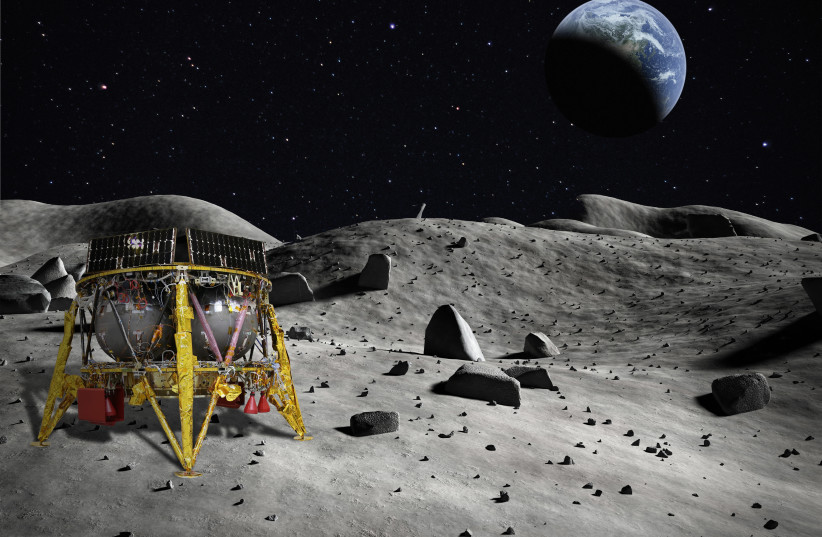Could dogs soon go where none of man's best friend have gone before? According to one project, yes — at least if those dogs are also robots.
Robot dogs, powered by artificial intelligence, could be deployed to the Moon to help study the lunar surface, thanks to a mission concept study backed by the European Space Agency (ESA) to explore the Moon, as was announced last week at the Europlanet Science Congress (EPSC) 2022 in Granada.
The mission, known as the Legged Exploration of the Aristarchus Plateau (LEAP), involves a four-legged robot dog of sorts whose AI has helped it learn that jumping is one of the best and easiest ways to navigate the Moon.
This is important, as it comes amid renewed efforts by global space agencies like NASA and the ESA to return to the Moon, including manned missions, in order to better explore and study the lunar surface. This is the goal of NASA's Artemis missions, which will eventually return mankind to the Moon.
But the robot dogs won't be going as simple companions for the aspiring astronauts.

Exploring the Moon, especially the Aristarchus plateau
As explained at the conference by Patrick Bambach at Germany's Max Plank Institute for Solar Research, the use of these robot dogs on the Moon has legitimate and pragmatic scientific use, specifically regarding the exploration of the Aristarchus plateau.
This region of the Moon is a large swath of land on the lunar surface. The area is fascinating for a number of reasons. For one thing, the plateau is home to the Aristarchus Crater, one of the brightest areas on the Moon - which means it has the brightest reflectivity. The plateau itself is also covered in pyroclastic deposits, which could be rich in a number of valuable elements and minerals, such as gases like hydrogen and oxygen or metals like iron and titanium.
In other words, it has a vast amount of potential and usefulness, since these resources can be pivotal for further lunar exploration.
However, the Aristarchus plateau on the Moon has another challenge: It is very hard to actually access normally.
According to NASA, the entire area is surrounded by lunar lava flows and is also covered in long, narrow and deep depressions in the ground known as rilles.
All of these factors contribute to how difficult it can be to access to Moon's Aristarchus plateau.
However, that is where LEAP comes in.
Who's a good robot dog?
LEAP's robot dog is based on ANYmal, a legged robot developed at ETH Zurich and being adapted by a joint scientific effort for the lunar surface.
The ANYmal robot dog is rather small, as far as scientific payloads to the Moon go, weighing less than 50 kilograms in mass.
Traditionally, the best way to explore the surfaces of cosmic bodies has been through rovers, whether that be on the Moon or on Mars. But this has issues. Specifically, rovers, which travel with wheels, can have serious trouble traversing difficult terrain.
Launched in 2003 and landing in 2004, the Spirit rover continued to explore Mars for several years until it got stuck in sand in 2009. This ultimately would help doom the rover, which lost contact with NASA in 2010.
But the robot dog won't have these limitations.
Rather than using wheels or treads to explore the surface, the robot dog uses AI training and four legs to make full use of its locomotive capabilities and find the best and most efficient way of moving. Already, early research into it has shown that it has already learned what astronauts have known since the Apollo mission: That in the Moon's low gravity environment, jumping is the easiest way to get around.
And it can do more than that. The ANYmal robot dog is more dog-like than in just its appearance. In addition to jumping and going up hills, it can also dig in the ground, flip rocks over and even pick up objects.
But unlike actual dogs, the robot dog has more tricks at its disposal, with those tricks being a number of scientific instruments and tools, which it can deploy. This will help it gather and retrieve samples from these hard to access areas on the Moon, like the Aristarchus plateau, and bring them over for study.
Currently, research and testing on these robot dogs are still in early stages. However, these early results are promising.
The goal right now is for LEAP to have the ANYmal robot dogs ready for the ESA's European Large Logistic Lander (EL3), which should make multiple trips to the Moon starting in the late 2020s.
